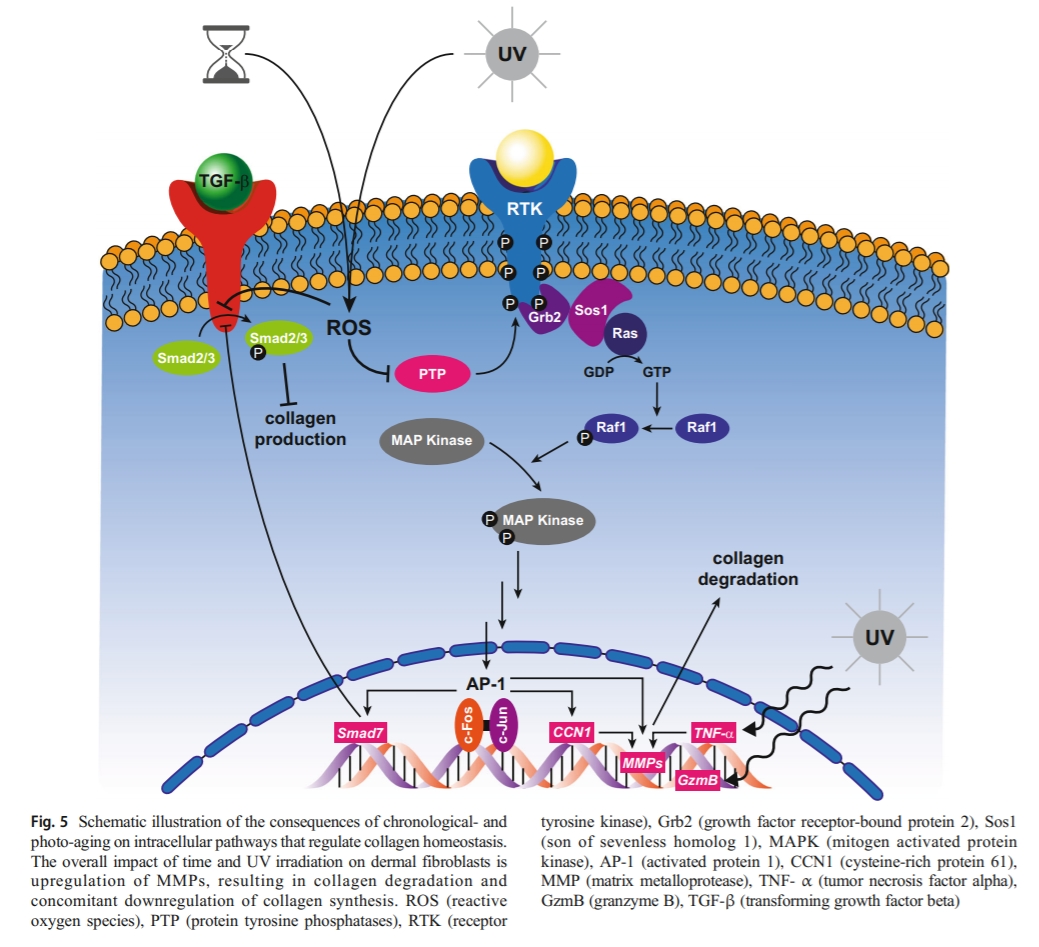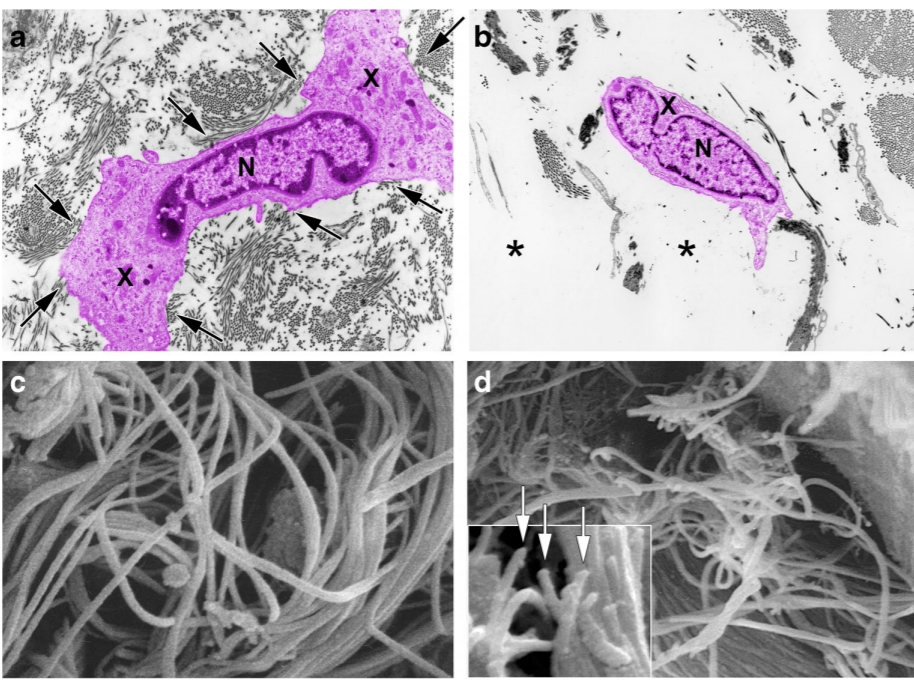Extracellular matrix regulation of fibroblast function: redefining our perspective on skin aging
Megan A. Cole, Journal of Cell Communication and Signaling volume 12, pages35–43(2018)
The dermal extracellular matrix (ECM) comprises the bulk of skin and confers strength and resiliency.
In young skin, fibroblasts produce and adhere to the dermal ECM, which is composed primarily of type I collagen fibrils. Adherence allows fibroblasts to spread and exert mechanical force on the surrounding ECM. In this state, fibroblasts display a “youthful” phenotype characterized by maintenance of the composition and structural organization of the dermal ECM.
During aging, fibroblast-ECM interactions become disrupted due to fragmentation of collagen fibrils. This disruption causes loss of fibroblast spreading and mechanical force, which inextricably lead to an “aged” phenotype; fibroblasts synthesize less ECM proteins and more matrix-degrading metalloproteinases. This imbalance of ECM homeostasis further drives collagen fibril fragmentation in a self-perpetuating cycle. This article summarizes age-related changes in the dermal ECM and the mechanisms by which these changes alter the interplay between fibroblasts and their extracellular matrix microenvironment that drive the aging process in human skin.















